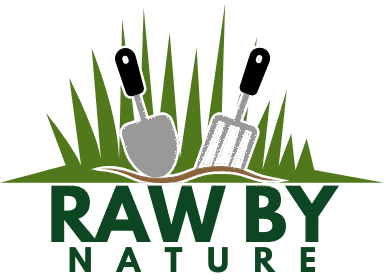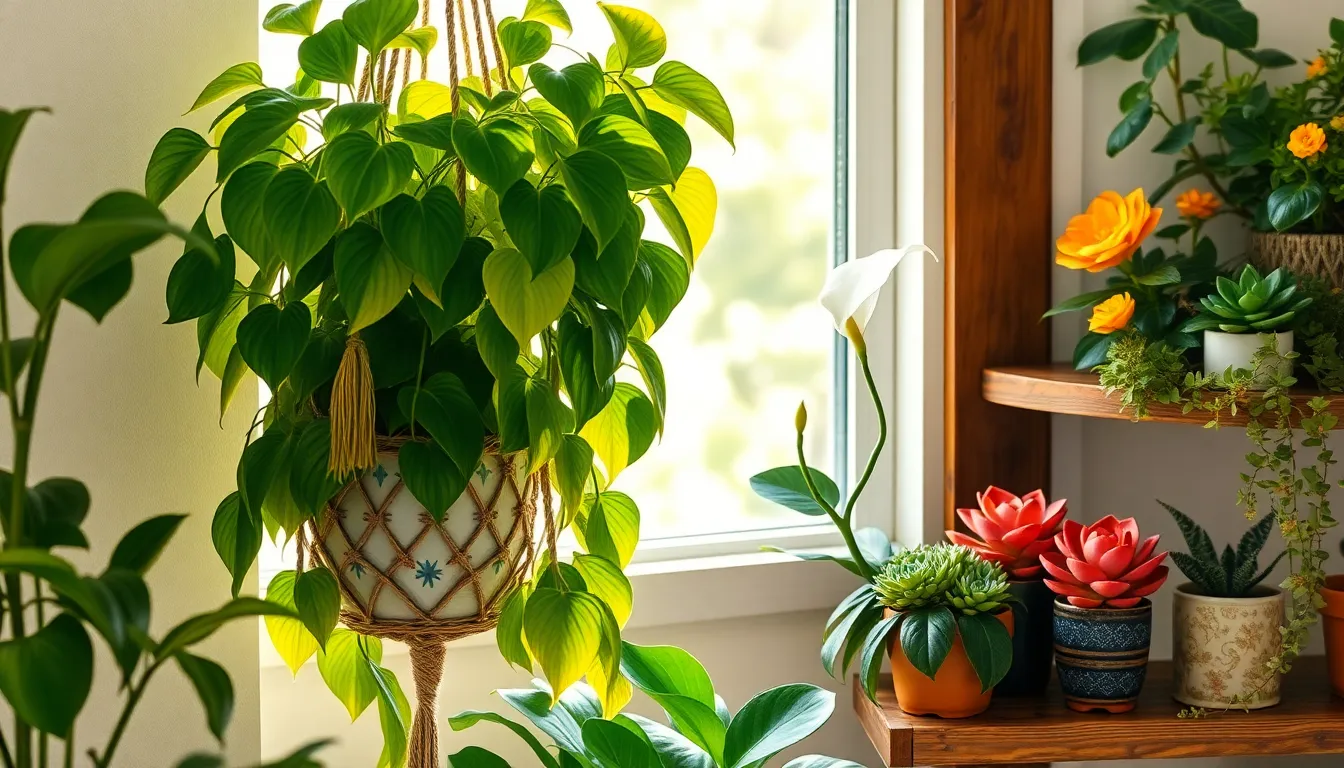Welcoming plants into your home is like inviting a breath of fresh air indoors, offering a touch of nature’s serenity to your daily life. Whether you’re a novice just dipping your toes into the world of indoor gardening or a seasoned green thumb seeking to expand your leafy collection, the joys of nurturing easy-care plants are boundless and deeply rewarding.
Indoor plants not only enhance the aesthetic appeal of your living space but also contribute to improved air quality and overall well-being. In this article, you’ll discover a curated selection of beginner-friendly plants that thrive with minimal fuss, perfect for those eager to cultivate their green sanctuary without the stress of high maintenance.
By focusing on hardy, adaptable varieties, you’ll gain confidence in your gardening skills and find satisfaction in watching your plants flourish. We’ll explore practical tips on how to care for each plant, ensuring you have all the knowledge needed to nurture your indoor garden successfully. Embrace this opportunity to enrich your home with greenery, as you learn, grow, and enjoy the simple pleasures of indoor gardening.
Choosing Beginner-Friendly Houseplants
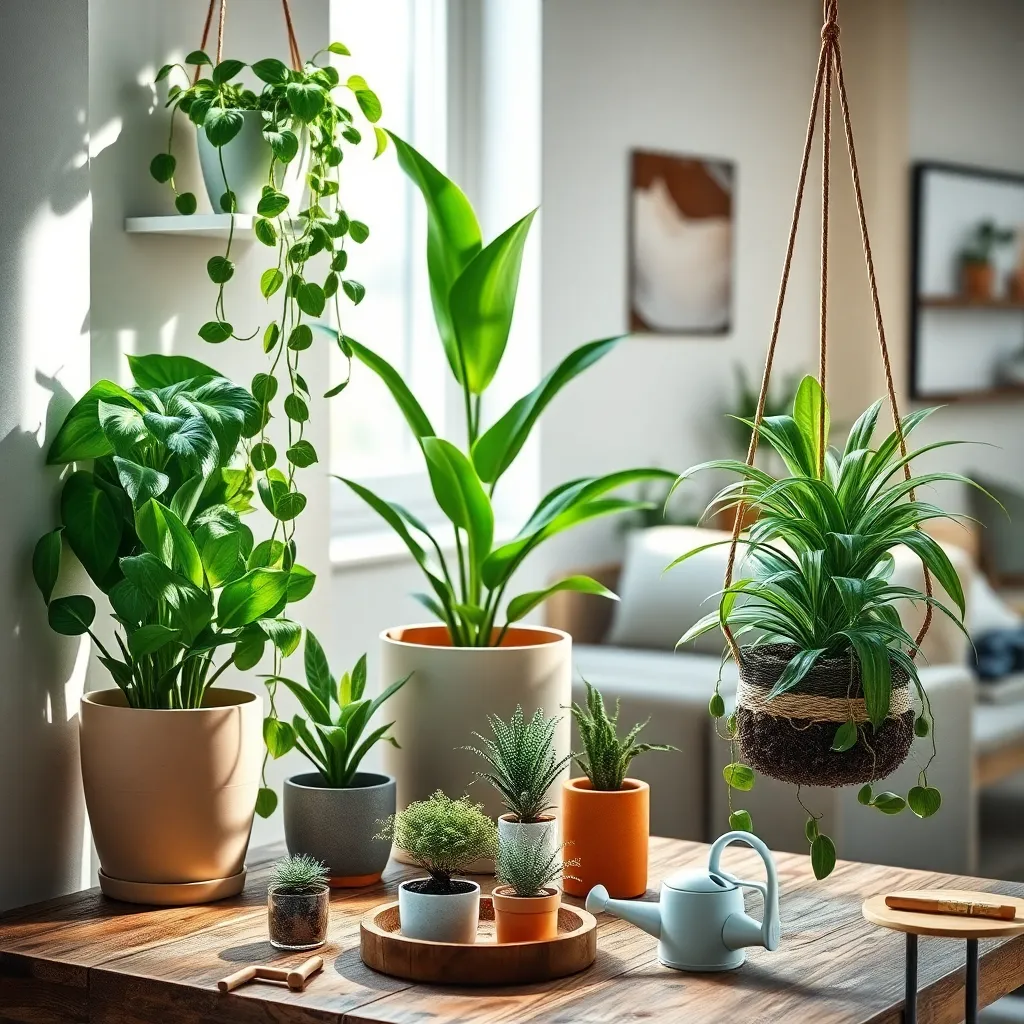
When starting with houseplants, it’s essential to choose varieties that are known for their resilience and ease of care. Snake plants, also known as Sansevieria, are an excellent option due to their ability to thrive in low light and their minimal watering needs.
Another fantastic choice for beginners is the pothos plant. It thrives in a range of lighting conditions, from low light to bright indirect sunlight, and requires watering only when the soil feels dry to the touch.
A great tip for ensuring your houseplants stay healthy is to use a well-draining potting mix. Look for soil blends that contain components like perlite or orchid bark to prevent waterlogging, which can lead to root rot.
For those looking to expand their collection, consider the peace lily, which not only purifies the air but also gives clear signals when it needs water by drooping its leaves. Ensure it is placed in indirect light and water it once a week, allowing the top inch of soil to dry out between waterings.
Optimal Light Conditions for Growth
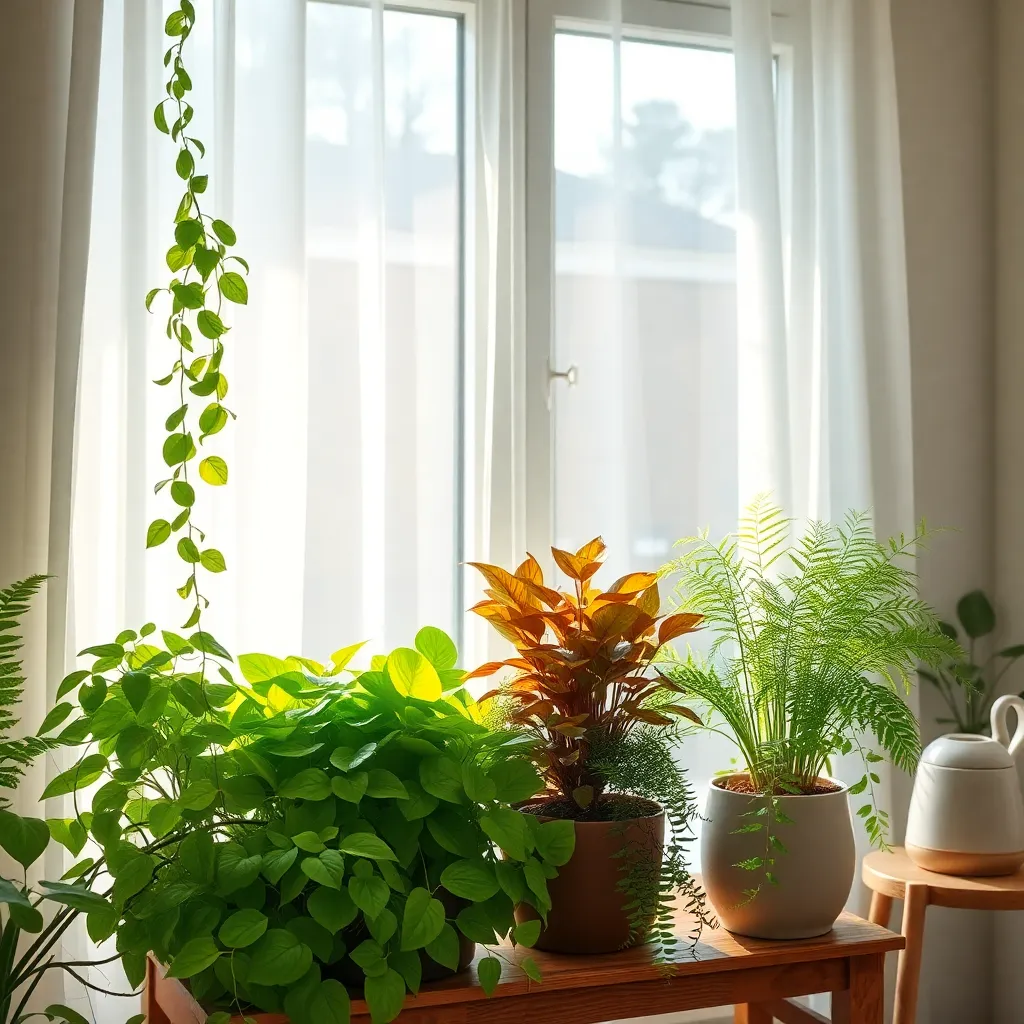
Understanding the light needs of your indoor plants is crucial for their growth and vitality. Most beginner-friendly houseplants such as pothos and snake plants thrive in indirect, bright light, which simulates their natural environment.
Placing your plants near a window that receives filtered sunlight can often be ideal. If direct sunlight is too intense, consider using a sheer curtain to diffuse the light, thereby preventing leaf burn.
For spaces with limited natural light, you can use artificial grow lights to supplement your plants’ needs. LED grow lights are energy-efficient and can be set up on a timer to mimic natural daylight cycles, ensuring your plants receive consistent light.
It’s important to periodically rotate your plants to ensure even light distribution, which helps prevent lopsided growth. Additionally, observe your plants’ leaves for signs of inadequate lighting, such as yellowing or elongated stems, and adjust their placement accordingly.
Simple Watering Tips for Novices
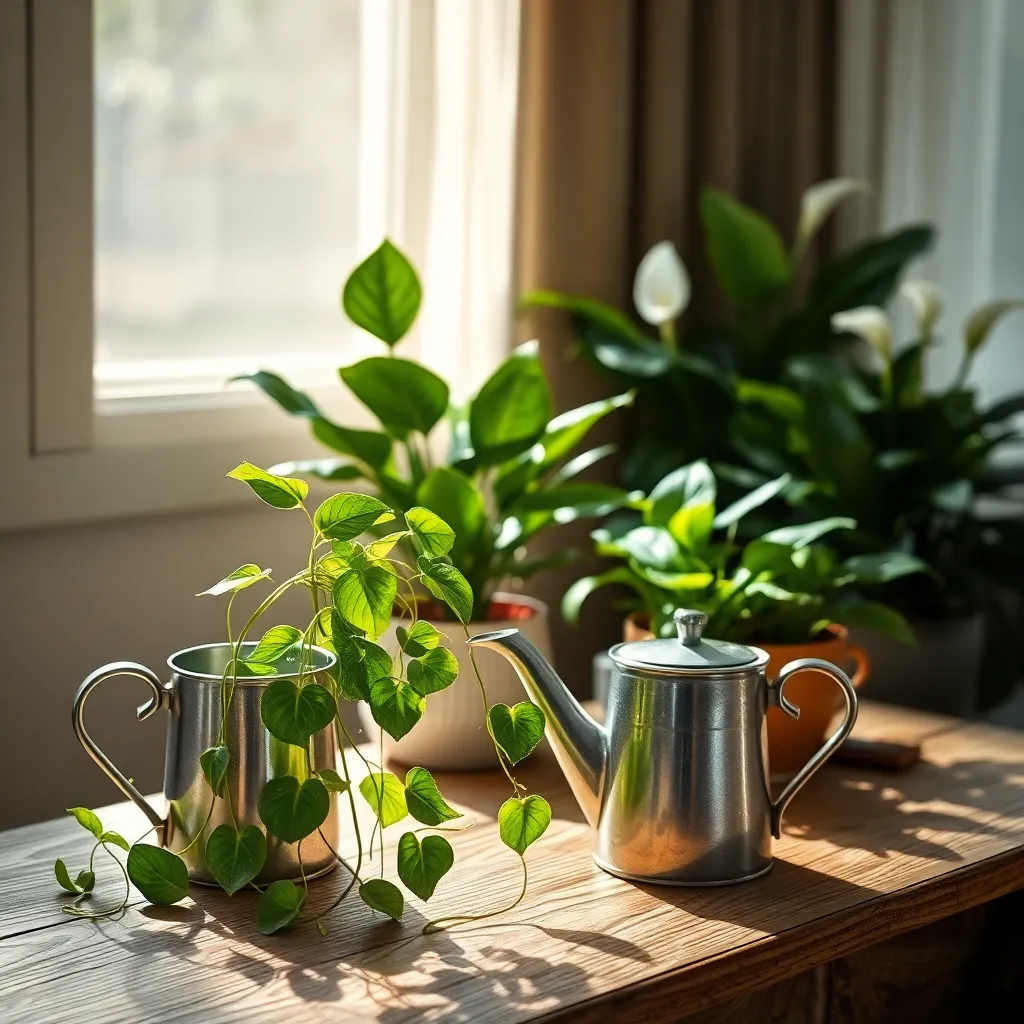
Watering is a crucial aspect of indoor plant care, yet it can be surprisingly tricky to get right. For beginners, the key is to remember that less is often more when it comes to watering. Overwatering is a common mistake that can lead to root rot and other issues. To prevent this, always check whether the top inch of soil is dry before adding water.
Invest in a simple moisture meter to take the guesswork out of watering. This tool will help you determine the soil moisture level and avoid guessing. Alternatively, you can use your finger; if the soil feels dry to the touch, it’s time to water. Aim to water thoroughly, ensuring that excess water drains out of the pot, which helps prevent the accumulation of salts and minerals in the soil.
Different plants have varying water needs, so it’s essential to tailor your approach. For instance, succulents and cacti prefer to dry out completely between waterings, while ferns and peace lilies thrive with consistently moist soil. Research your specific plant’s water requirements to provide optimal care. Remember, it’s better to underwater occasionally than to overwater consistently.
Consider the pot and soil type when planning your watering schedule. Pots with drainage holes are ideal because they allow excess water to escape, reducing the risk of waterlogged soil. Use a well-draining potting mix for most indoor plants, which aids in preventing overwatering. For advanced care, consider collecting rainwater for your plants, as it is free of chemicals found in tap water and can benefit sensitive species.
Soil and Pot Selection Basics
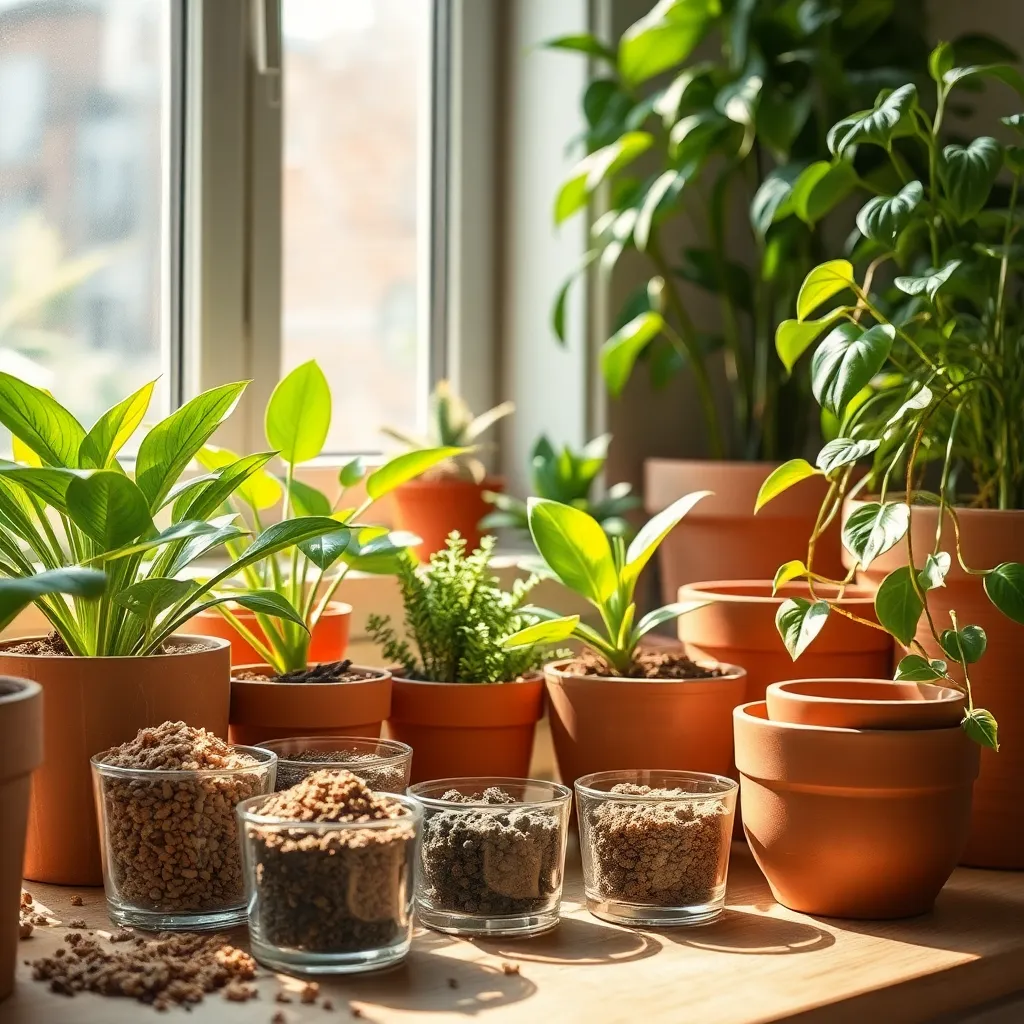
Choosing the right soil and pot is crucial for the success of your indoor plants. Different plants thrive in different soil types, so it’s important to know your plant’s needs. For example, succulents and cacti prefer a well-draining soil mix, often with added sand or perlite to prevent root rot. In contrast, tropical plants like peace lilies enjoy a peat-based soil that retains moisture without becoming waterlogged.
Pots come in various materials, each with its own pros and cons. Terracotta pots are breathable and help prevent overwatering, making them ideal for plants that prefer drier conditions. However, they can dry out quickly, which means more frequent watering. On the other hand, plastic pots retain moisture longer, making them a good option for plants that need consistent hydration, like ferns.
When selecting a pot, ensure it has drainage holes to prevent water from accumulating at the bottom. Proper drainage is vital to avoid root rot, one of the most common issues for indoor plants. If your chosen pot doesn’t have drainage holes, consider using it as a decorative outer layer, with a smaller pot inside that provides the necessary drainage.
For advanced plant enthusiasts, consider experimenting with self-watering pots. These pots are designed to keep plants hydrated by using a reservoir system, which can be particularly beneficial for those with busy schedules. Self-watering pots help maintain consistent moisture levels, reducing the risk of both over- and under-watering. As you gain experience, you’ll develop a better understanding of the balance between soil moisture and plant health, leading to a thriving indoor garden.
Troubleshooting Common Plant Issues
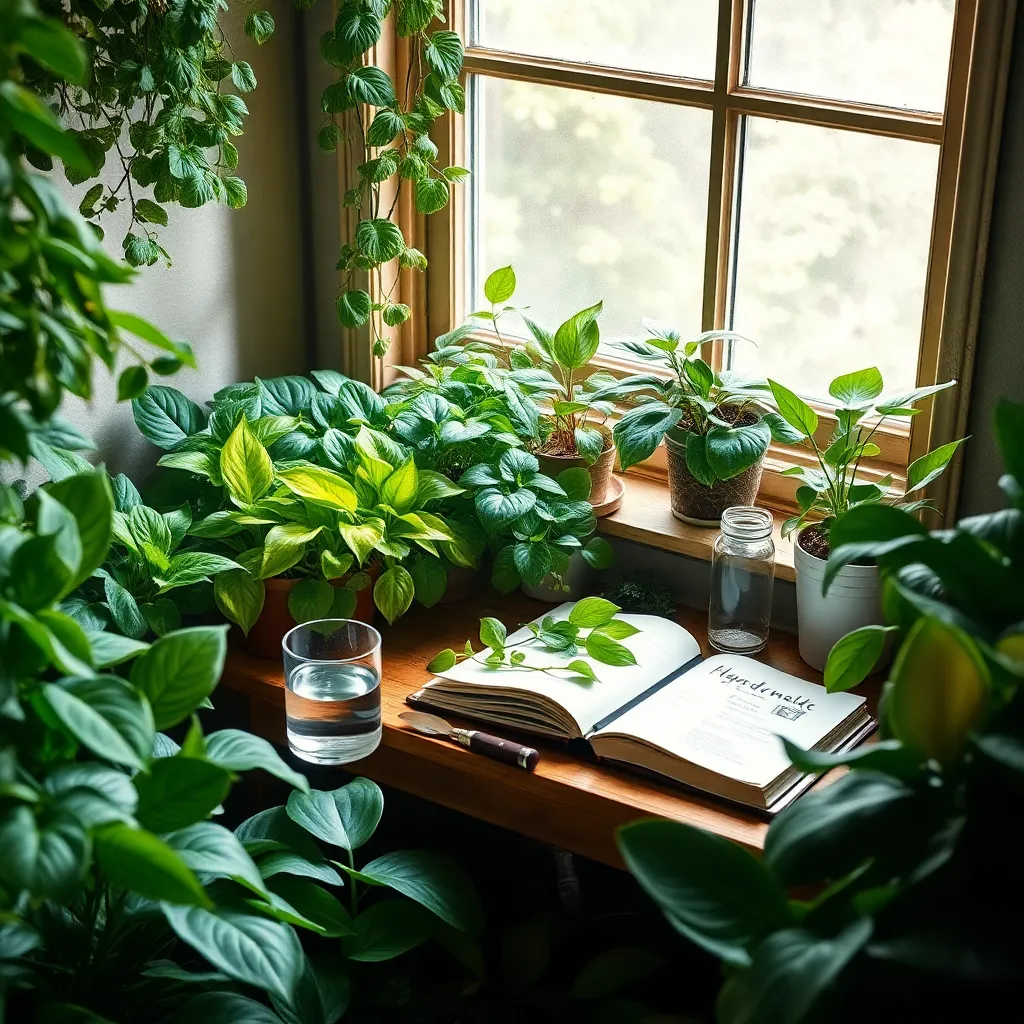
One common issue beginners face is wilting leaves, which often indicates inconsistent watering. To rectify this, ensure your plant’s soil is moist but not waterlogged, and consider using a moisture meter to guide your watering schedule.
Another frequent problem is yellowing leaves, which can be a sign of overwatering or nutrient deficiency. To address this, allow the soil to dry out between waterings and apply a balanced, water-soluble fertilizer every four to six weeks.
Poor light conditions can lead to leggy growth, where plants stretch toward the light, appearing thin and weak. Move your plant closer to a window with bright, indirect light, or use a grow light to supplement natural sunlight, especially in darker rooms.
For those struggling with pest infestations, such as spider mites or aphids, regularly inspect your plants and use a gentle insecticidal soap or neem oil spray. Ensure good air circulation around your plants to prevent pests and diseases, and remove any dead or decaying plant material promptly.
Conclusion: Growing Success with These Plants
In exploring the world of easy indoor plants for beginners, we’ve uncovered five key concepts that parallel nurturing successful relationships. First, the importance of starting small, just like choosing a low-maintenance plant, lays a solid foundation for growth. Second, understanding the specific needs of your plant mirrors recognizing and meeting your partner’s needs. Third, developing patience and consistency in care parallels the commitment necessary for relationship longevity. Fourth, embracing adaptability, as plants flourish with seasonal changes, highlights the need for flexibility in relationships. Finally, celebrating growth and progress, no matter how small, strengthens bonds just as it does with our leafy companions.
Now, with these insights, consider choosing a simple plant to tend to, reflecting your commitment to nurturing your relationships. This small step can serve as a daily reminder of the care and attention relationships require.
Don’t let this valuable information slip away—bookmark this article to revisit these foundational concepts whenever you need a refresher. As you cultivate both your indoor garden and your relationships, you’re setting the stage for thriving bonds that can weather any season. Remember, every step you take today plants the seeds for tomorrow’s success.
